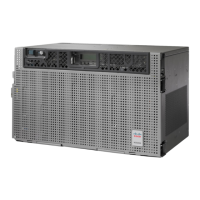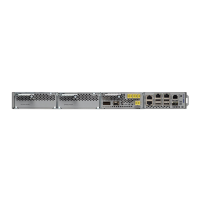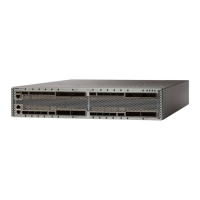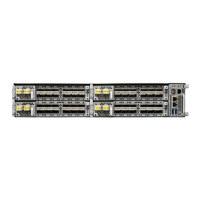b) If the answer is yes, retrieve the following values according to the card type.
• For pre- or booster amplifier cards, click the Provisioning > Optical Ampli. Line > Gain Setpoint tabs.
• Go to 8.d, on page 74.
c) If the answer is no, go to 8.d, on page 74.
d) Move along the downstream nodes until a card with the APC-CORRECTION-SKIPPED condition for a W–E
port is detected.
e) From that card, retrieve parameters according to 8.b, on page 74.
f) In the first downstream node of the restored span, go to the Circuits tab and identify all the OCHNC circuits
passing through the repaired span.
g) Edit all the OCHNC circuits identified in 8.a, on page 73:
• Click the Tools > Circuits > Set Circuit State tabs.
• Change the Target Circuit Admin. State to OOS,DSBLD (or Locked, disabled) and click Apply.
h) Go to the DWDM card for which the Gain or VOA Attenuation values were retrieved (the card can be either the
one in substep 8.b, on page 74 or 8.e, on page 74) and verify that the administrative state of the alarmed port is
now OOS (locked).
i) If the alarmed port is not OOS (locked), go to the card view, click Circuits, and identify the remaining OCHNC
circuits that are still active. Put the circuits in OOS,DSBLD (or Locked, disabled) state in order to reach the OOS
(locked) administrative state on the alarmed port.
j) Wait for three minutes, then switch the administrative state of only one of the circuits selected in and 8.a, on page
73 and 8.i, on page 74back to IS (Unlocked).
k) After the network completes the restart phase, go to the formerly alarmed card and verify that the
APC-CORRECTION-SKIPPED condition has cleared and a new Gain Setpoint or VOA Attenuation Reference
(compare with 8.a, on page 73) has been provisioned.
The total variation of the above parameter setpoint must be within approximately +/– 1 dBm of the
Span Loss Change measured in Step 3, on page 73.
Note
l) If the APC-CORRECTION-SKIPPED condition has cleared and the system has restarted properly, we highly
recommend that you complete the following procedure due to the fact that a Span Loss value that is significantly
different than the design is now present.
• Go back to the Cisco TransportPlanner tool and open the network design configuration file.
• Select Installation Mode to freeze the node layout and amplifier positioning.
• Change the span value, inserting the new Insertion Loss measured in Step 3, on page 73.
• Run the Cisco TransportPlanner algorithm to validate the new design.
• If the optical result indications (power, OSNR, CD, and so on) are all green, the repair procedure is complete.
If not, log into the Technical Support Website at http://www.cisco.com/techsupport for more information
or call Cisco TAC (1 800 553-2447) in order to report a service-affecting problem.
If the APC condition persists, log into the Technical Support Website at
http://www.cisco.com/techsupport for more information or call Cisco TAC (1 800 553-2447) in
order to report a service-affecting problem.
Note
Step 9 For the two fibers belonging to the repaired span, identify the fiber for to the east to west (E–W) line direction.
Cisco NCS 2000 series Troubleshooting Guide, Release 11.0
74
General Troubleshooting
Corrective Action for Scenario 3
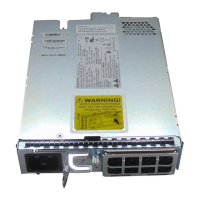
